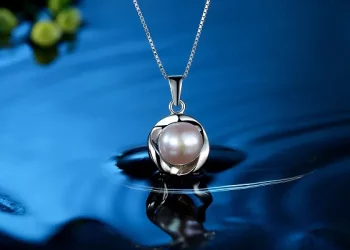When it comes to luxury cars, BMW is a name that immediately springs to mind. The BMW 3 Series has long been a symbol of sophistication and performance in the automotive world. But have you ever wondered how much it costs to manufacture such an iconic vehicle? In this article, we will delve into the intricate details of the manufacturing process of the BMW 3 Series and break down the expenses involved. Buckle up as we take you on a ride through the world of BMW production costs.
1.Research and Development
Before any BMW 3 Series vehicle rolls off the assembly line, there is a significant amount of research and development that goes into its creation. The BMW engineering team meticulously designs every aspect of the vehicle, from its engine performance to its exterior aesthetics. This stage involves in-depth analysis, testing, and prototyping.
Conceptualization and Design:
The process begins with the conceptualization of the vehicle’s design, which includes aerodynamics, aesthetics, and technology integration. Designers and engineers collaborate to create the blueprint for the 3 Series.
Cutting-Edge Technology:
BMW is known for its innovative technology, and incorporating these features into the 3 Series requires substantial investments in research. From advanced infotainment systems to cutting-edge safety features, every aspect is carefully considered.
Materials and Prototyping:
Premium materials are selected to ensure the highest quality. Prototyping and testing help identify any flaws in design or performance, allowing for adjustments to be made before mass production begins.
2.Manufacturing Process
Once the design is finalized, the manufacturing process begins. BMW has several production facilities around the world, each with its own specialized tasks. The manufacturing process can be divided into various stages:
Body Assembly:
The chassis and body of the 3 Series are assembled with precision. High-strength steel and aluminum are used to ensure safety and performance.
Engine and Transmission:
BMW engines are renowned for their power and efficiency. The assembly of engines and transmissions is a crucial part of the manufacturing process.
Interior and Electronics:
The luxurious interior of the 3 Series is carefully crafted, with attention to detail in materials, upholstery, and electronic systems.
Quality Control:
BMW places a strong emphasis on quality control, with rigorous inspections and testing at every stage of production.
3.Labor Costs
Skilled labor plays a vital role in the manufacturing of the BMW 3 Series. BMW employs highly trained technicians, engineers, and assembly line workers to ensure the precision and quality of every vehicle.
Skilled Workforce:
BMW invests in training programs to ensure its workforce is well-equipped to handle the complexities of automotive production.
Labor Unions and Benefits:
Labor costs also include benefits, healthcare, and other incentives for employees, which contribute to the overall cost.
4.Materials and Components
The quality of materials and components used in the BMW 3 Series is a significant factor in its production cost. BMW sources top-grade materials to maintain its reputation for excellence.
Premium Materials:
High-quality steel, aluminum, and composite materials are used for the body and chassis.
Advanced Electronics:
The integration of advanced electronic components, including infotainment systems and driver-assistance features, adds to the cost.
5.Environmental Regulations
Compliance with environmental regulations is a priority for BMW. As a result, the manufacturing process includes measures to minimize the environmental impact, such as recycling and reducing energy consumption.
Sustainability Initiatives:
BMW invests in eco-friendly technologies and processes to meet stringent environmental standards.
Compliance Costs:
Meeting regulatory requirements can increase production costs, but it reflects the company’s commitment to sustainability.
6.Marketing and Distribution
Once the BMW 3 Series is manufactured, it goes through marketing, distribution, and dealership channels. These aspects also contribute to the overall cost of the vehicle.
Marketing Campaigns:
BMW invests in marketing campaigns to promote the 3 Series and build brand recognition.
Distribution and Dealerships:
Costs associated with transporting and maintaining vehicles at dealerships are included in the overall expenses.
Conclusion
In conclusion, the cost of manufacturing a BMW 3 Series is influenced by a multitude of factors, including research and development, manufacturing processes, labor, materials, environmental regulations, and marketing. The commitment to quality and innovation is what sets BMW apart, making the 3 Series a symbol of luxury and performance.
While the exact cost breakdown is proprietary information, it’s evident that BMW spares no expense in delivering a world-class driving experience to its customers. The next time you see a BMW 3 Series on the road, you’ll have a deeper appreciation for the meticulous craftsmanship and engineering that goes into making it a reality.
Related Topics:
Which of the BMW three series has a turbo:A Simple Guide
Unveiling Value: Which BMW 3 series is the most cost-effective to buy?
The Best of the BMW 3 Series: A Quick Guide





























